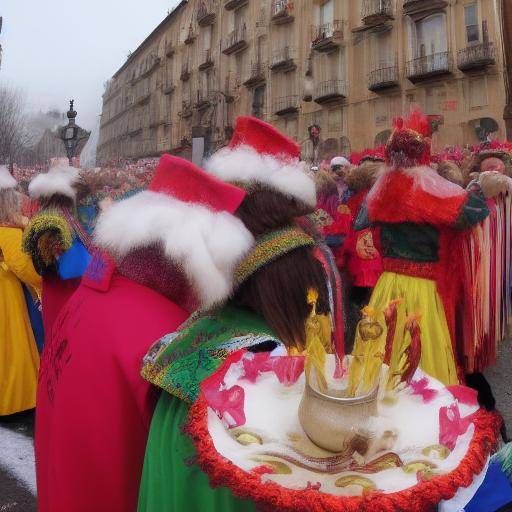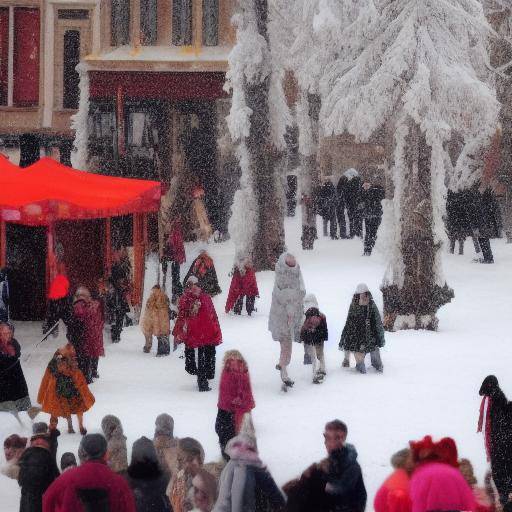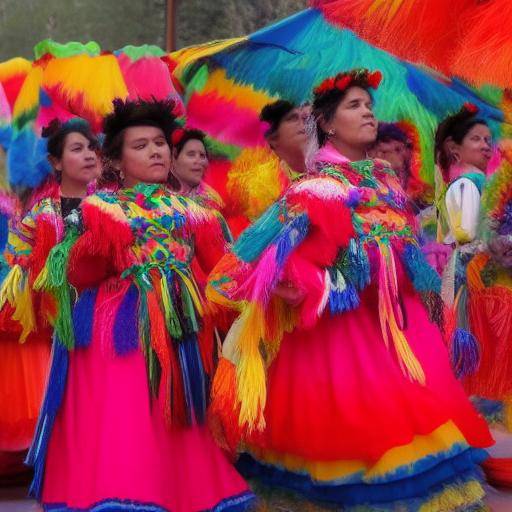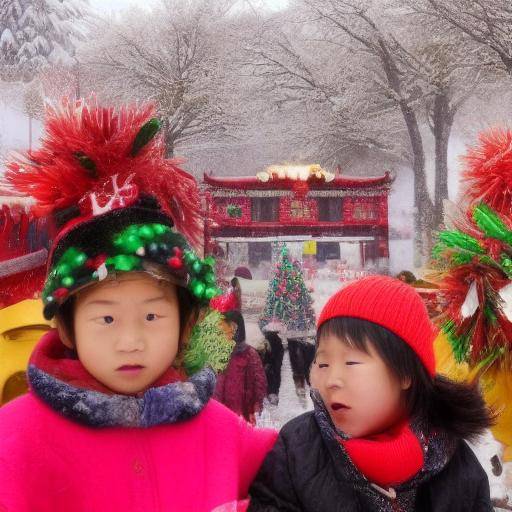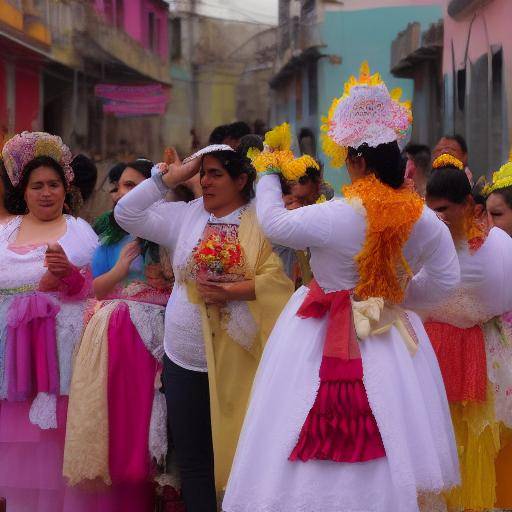
In Russia, a celebration full of tradition, taste and joy, spreads annually during the week before the beginning of the Orthodox Lent, offering a festival of colorful and delicious crepes known as blini. This festival, known as Maslenitsa, contains a rich cultural and religious history dating back centuries, combining elements of Slavic pagan life and Orthodox tradition. In this article, we will explore the meaning of Maslenitsa, its importance in Russian culture and the traditions surrounding it. In addition, we will examine how the celebration of Maslenitsa illustrates the intersection of butter, winter and orthodoxy in Russian life and culinary.
Introduction
The celebration of Maslenitsa, also known as "The Week of the blini", is an ancient Slavic festival that has its roots in the pagan celebrations of the end of winter and the beginning of spring. Over the years, this party has integrated elements of Orthodox religion, becoming a colorful week of fun, food and traditions that highlight the importance of the family, food and community in Russian culture. From a historical panorama to the way Maslenitsa continues to be celebrated in contemporary Russia, this festival carries with it a profound meaning and a rich tradition.
History and Background of Maslenitsa
The history of Maslenitsa dates back to the ancient pagan roots of Eastern Europe. Originally, it was a holiday dedicated to the arrival of spring and the farewell of the crude winter. This celebration focused on the solstice of spring and the idea of rebirth. As Orthodox Christianity spread throughout the region, Maslenitsa assumed new meanings and was integrated into the liturgical calendar of the Orthodox Church.
The week of Maslenitsa represents the last moment of celebration and joy before Lent begins, a period of fasting and reflection in the Orthodox tradition. During this week, the Russians enjoy traditional dishes, especially the blini, which symbolize the sun and, therefore, the arrival of spring. The festivities include parades, music, folkloric dances and the burning of a snowman, Oshar, which symbolizes the farewell of winter.
Detailed Analysis of the Celebration
Maslenitsa is an occasion to enjoy in community and celebrate Russian culture in all its splendor. The celebration of the week of the blini is a manifestation of the crucial role of food in the union of families and communities. In addition, the traditional butter used in the preparation of the blini represents abundance and prosperity.
The symbolic elements of Maslenitsa are intertwined with the very essence of life in Russia, where strength and joy are found in sharing traditional meals that honor the land and history of the country. In addition, the connection between winter and the arrival of spring reflects the deep relationship that the Russians have with nature, which has shaped their identity and way of life over the centuries.
Examine to Fund the Relationship Between the Butter, Winter and Orthodoxy
Butter, a central ingredient in the development of blini, represents wealth and abundance in Russian culture. In the context of Maslenitsa, butter becomes a symbol of celebration and communion, showing the relationship between food, cultural identity and festive traditions. Winter, on the other hand, represents the time of preparation and reflection, providing the appropriate context to appreciate the arrival of spring and the rebirth that symbolizes Maslenitsa. Finally, the influence of orthodoxy on this festivity highlights the connection between religious tradition and popular customs, reinforcing the central role that Orthodox religion plays in the life and culture of Russia.
Comparative Analysis between the Butter, Winter and Orthodoxy
Butter, winter and orthodoxy are intertwined in a unique and meaningful way during the celebration of Maslenitsa. The cultural importance of these elements is manifested in the way they contribute to the construction of the Russian identity and in the way they connect the pagan tradition with the Orthodox faith. Butter, with its taste and symbolic wealth, merges with the essence of winter, creating a bridge between contemplation in difficult times and the hope of a new cycle of life. In turn, the influence of orthodoxy in Maslenitsa offers a revealing look at the fusion of old pagan customs with religious beliefs, highlighting the diversity and wealth of Russian culture.
Practical Tips and Accessible Recommendations
For those who wish to celebrate Maslenitsa or prepare blini at home, it is advisable to use traditional recipes that include high-quality butter, dressings like sour cream and caviar, and a festive atmosphere to share this tradition with family or friends. In addition, learning about the history and meaning of Maslenitsa can enrich the experience, providing a greater understanding of this unique holiday.
Conclusions and FAQs
In conclusion, Maslenitsa represents a charming celebration that unites cultural wealth, the importance of food and the sense of community in Russian life. Butter, winter and orthodoxy are intertwined in a unique way in this holiday, highlighting the rich tradition, the profound spirituality and the joy of living that characterizes Russian culture.
Frequently asked questions
How are traditional blini prepared?
Traditional blini are prepared with flour, milk, eggs, yeast, salt and butter. The dough is left to rest and ferment before being cooked in a hot pan, achieving a fine and spongy result.
What is the meaning of snowman burning during Maslenitsa?
The burning of the snowman, known as Oshar, symbolizes the farewell of winter and the arrival of spring, marking the end of the cold season and the beginning of a new cycle of life.
What role does orthodoxy play in Maslenitsa?
Orthodoxy provides a religious background to Maslenitsa, linking the festive to the time of spiritual preparation that precedes Lent.
What is the importance of butter in the celebration of Maslenitsa?
Butter is a symbolic ingredient in the preparation of the blini, representing the richness and abundance that characterizes this festivity.
Why is Maslenitsa celebrated just before the Orthodox Lent?
Maslenitsa is celebrated as a moment of joy and celebration before the season of fasting and reflection that represents the Orthodox Lent.
What is the role of the blini during Maslenitsa?
The blini are the central dish of Maslenitsa, symbolizing the sun and the arrival of spring, and are shared in family and community meetings.
We conclude, therefore, that Maslenitsa represents a fascinating combination of history, tradition, culture and religion, which manifests itself in the celebration of butter, winter and orthodoxy. This week of the blini highlights the wealth and diversity of Russian culture, as well as the deep connection between food, nature and spiritual beliefs. Celebrating Maslenitsa is honoring an entrenched tradition that illustrates the beauty and vitality of Russian life.
In short, Maslenitsa is much more than a simple holiday. It represents a colorful and rich celebration of traditions that encapsulates the very essence of Russian culture. Butter, winter and orthodoxy are intertwined in a unique way in this celebration, creating a profoundly significant experience that unites people through time and space, reminding us of the importance of cultural roots and community unity.
Exploring Maslenitsa and understanding its meaning in Russian culture is an opportunity to immerse yourself in the history, tradition and spirituality of a people whose identity has been shaped by centuries of diverse influences. The celebration of Maslenitsa remains a vibrant celebration that promotes joy, union and sense of belonging in Russian society.
So, are you ready to go into the charming celebration of Maslenitsa and discover the incredible convergence between butter, winter and orthodoxy in this unique and rich festive in history? Get ready to enjoy a week full of color, flavor and tradition in the beautiful Russia!
Long live Maslenitsa, the week of the blini!
Remember, Maslenitsa is a celebration that motivates people to meet, share and enjoy the company of loved ones. It is a reminder of the importance of human connection, the celebration of life and the preservation of traditions that have enriched Russian culture for generations.








